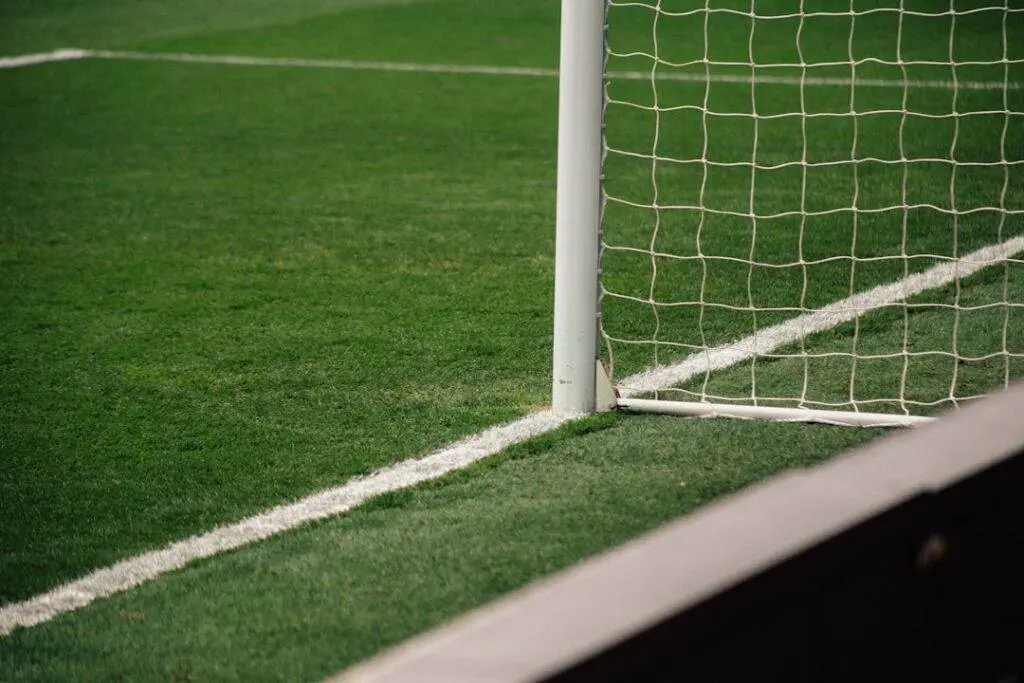Zonal marking is a strategic cornerstone, influencing defensive setups and shaping gameplay dynamics on the field. Understanding its principles and nuances unveils the intricate strategies employed by coaches and teams striving for defensive solidity and tactical advantage. It is an important concept for football fans and players to understand, as it can greatly impact the outcome of a game. By understanding zonal marking, fans can better analyze and appreciate the defensive strategies employed by teams, while players can improve their defensive skills and decision-making on the field.
What is Zonal Marking in Football?
Zonal marking is a defensive tactic in football where players are assigned specific zones or areas of the field to defend rather than being responsible for marking individual opponents. The basic principle of zonal marking is that each player is responsible for defending a specific field area. Opponents are responsible for challenging or intercepting the ball when they enter that area.
Zonal marking differs from man-to-man marking, where players are assigned to mark a specific opponent and follow them wherever they go on the field. In zonal marking, players are more focused on defending space than individual players. This allows for better field coverage and makes it easier to organize defensively.
The History of Zonal Marking Tactics in Football
The use of zonal marking in football has evolved. It was first introduced in the 1960s by Hungarian coach Béla Guttmann, who used it successfully with his teams. However, it wasn’t until the 1970s that zonal marking became more widely adopted by teams worldwide.
Famous teams and coaches have used zonal marking successfully throughout history. One notable example is Arrigo Sacchi’s AC Milan team of the late 1980s and early 1990s. Sacchi implemented a highly organized zonal marking system that helped his team win numerous titles, including back-to-back European Cups.
Zonal marking has had a significant impact on the game of football. It has allowed teams to defend more effectively as a unit and has made it harder for opponents to break through defensive lines. It has also influenced attacking play, as teams have had to find new ways to break down zonal marking defenses.
Advantages and Disadvantages of Zonal Marking
Zonal marking has several advantages that make it an effective defensive tactic. One advantage is that it allows for better coverage of space on the field. By assigning players specific zones to defend, teams can ensure no gaps or areas are left unmarked. This makes it harder for opponents to find space and create scoring opportunities.
Another advantage of zonal marking is that it is easier to organize defensively. With man-to-man marking, players have to constantly adjust their positioning based on the movement of their opponents. This can lead to confusion and gaps in the defense. In zonal marking, players clearly understand their responsibilities and can focus on defending their assigned zones.
However, zonal marking also has its disadvantages. One disadvantage is that it can be vulnerable to crosses into the box. Since players are focused on defending space rather than individual opponents, they may lose track of their opponents when a cross is played into the box. This can lead to free headers or tap-ins for the attacking team.
Another disadvantage of zonal marking is the lack of individual marking. In man-to-man marking, players are responsible for marking specific opponents and can apply pressure directly. In zonal marking, players may not always be near their opponents, making it easier to receive and control the ball.
How Zonal Marking differs from Man-to-Man Marking
Zonal marking and man-to-man marking are two different defensive tactics used in football. Zonal marking involves players defending specific field areas, while man-to-man marking involves individually marking opponents.
One advantage of zonal marking over man-to-man marking is that it allows for better space coverage. In zonal marking, players defend specific field areas, ensuring no gaps or areas are left unmarked. This makes it harder for opponents to find space and create scoring opportunities.
On the other hand, man-to-man marking allows for more direct pressure on opponents. In man-to-man marking, players are responsible for marking specific opponents and can apply pressure directly. This can disrupt the opponent’s rhythm and make it harder for them to receive and control the ball.
The Role of Midfielders in Zonal Marking

Midfielders play a crucial role in zonal marking. They are responsible for covering a large field area and are often the first line of defense. Their positioning and decision-making can greatly impact the effectiveness of the zonal marking system.
In zonal marking, midfielders are responsible for defending the central areas of the field. They need to be able to read the game and anticipate where the ball will be played. They also need to close down opponents and intercept passes quickly.
Midfielders in zonal marking also have an important role in transitioning from defense to attack. Once they win the ball, they must quickly distribute it to their attacking teammates and help initiate counter-attacks.
Zonal Marking Strategies for Defending Set Pieces
Zonal marking is particularly important when defending set pieces, such as corners or free kicks. It allows teams to defend specific box areas and prevent opponents from getting free headers or shots on goal.
One strategy for organizing zonal marking during set pieces is to assign players specific zones to defend. Each player should clearly understand their responsibilities and be positioned in a way that allows them to challenge opponents who enter their zone.
Communication is also key when defending set pieces. Players need to constantly communicate with each other to ensure that everyone is in the right position and that there are no gaps in the defense. This can help prevent opponents from finding space and getting free headers or shots on goal.
Common Mistakes in Zonal Marking and How to Avoid Them
Several common mistakes can occur when implementing zonal marking. One common mistake is ball-watching, where players become fixated on the ball and lose track of their opponents. This can lead to opponents finding space and creating scoring opportunities.
To avoid ball-watching, players must constantly be aware of their surroundings and opponents. They should be scanning the field and checking their shoulder to ensure that they always know where their opponents are.
Another common mistake in zonal marking is a lack of communication. Without proper communication, players may not be in the right position or leave gaps in the defense. It is important for players to constantly communicate with each other and provide information about the movement of opponents.
The Impact of Zonal Marking on Attacking Play
Zonal marking can have a significant impact on attacking play. It can make it harder for teams to break down defensive lines and create scoring opportunities.
Teams facing zonal marking defenses must find new ways to create space and penetrate the defense. This can involve quick passing, movement off the ball, and exploiting gaps in the defense.
One strategy for breaking down zonal marking defenses is overloading specific field areas. By creating numerical advantages in certain areas, teams can force defenders out of position and create scoring opportunities.
Zonal Marking in Modern Football: Trends and Innovations
Zonal marking continues to evolve in modern football, with teams constantly looking for new ways to defend effectively. One trend in zonal marking is hybrid systems, where teams combine zonal marking and man-to-man marking elements.
Another trend is the use of pressing in zonal marking. Teams are more aggressive in their defensive approach, pressing opponents high up the field and trying to win the ball back quickly.
Innovations in zonal marking tactics include using technology to analyze and improve defensive performance. Teams are now using data and video analysis to identify weaknesses in their zonal marking system and adjust accordingly.
Coaching Tips for Implementing Successful Zonal Marking Tactics
Coaches looking to implement successful zonal marking tactics should focus on training and communication. Players need to understand their roles and responsibilities in the system and should be given opportunities to practice and improve their defensive skills.
Communication is also key in zonal marking. Coaches should encourage players to constantly communicate with each other and provide information about opponents’ movements. This can help prevent gaps in the defense and ensure everyone is in the right position.
Zonal marking is a defensive tactic used in football involving players marking specific field areas rather than individual opponents. It has evolved and has had a significant impact on the game. Understanding zonal marking is important for football fans and players, as it can greatly impact the outcome of a game. By understanding zonal marking, fans can better analyze and appreciate the defensive strategies employed by teams, while players can improve their defensive skills and decision-making on the field.
If you want to delve deeper into football tactics, you might want to check out this informative article on zonal marking: Football Tactics Explained. However, if you want more comprehensive coverage of the beautiful game, I highly recommend visiting Kicka Football. Their website offers a wealth of knowledge and insights into various aspects of football, from tactical analysis to player profiles and match reviews. For a great starting point, you can read their introductory post here. Happy reading and exploring the world of football!






